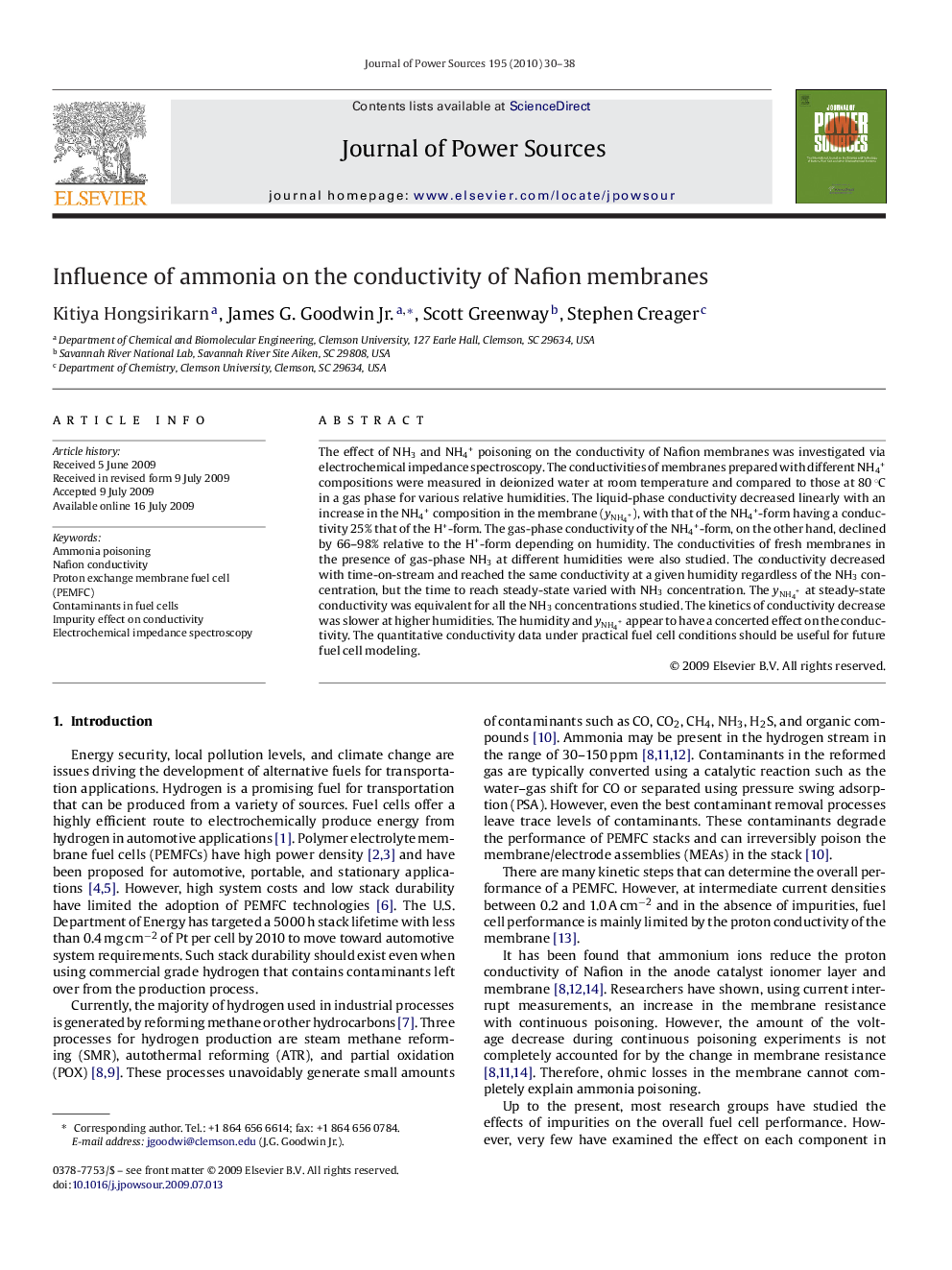| Article ID | Journal | Published Year | Pages | File Type |
|---|---|---|---|---|
| 1293944 | Journal of Power Sources | 2010 | 9 Pages |
The effect of NH3 and NH4+ poisoning on the conductivity of Nafion membranes was investigated via electrochemical impedance spectroscopy. The conductivities of membranes prepared with different NH4+ compositions were measured in deionized water at room temperature and compared to those at 80 °C in a gas phase for various relative humidities. The liquid-phase conductivity decreased linearly with an increase in the NH4+ composition in the membrane (yN+H4yNH4+), with that of the NH4+-form having a conductivity 25% that of the H+-form. The gas-phase conductivity of the NH4+-form, on the other hand, declined by 66–98% relative to the H+-form depending on humidity. The conductivities of fresh membranes in the presence of gas-phase NH3 at different humidities were also studied. The conductivity decreased with time-on-stream and reached the same conductivity at a given humidity regardless of the NH3 concentration, but the time to reach steady-state varied with NH3 concentration. The yN+H4yNH4+ at steady-state conductivity was equivalent for all the NH3 concentrations studied. The kinetics of conductivity decrease was slower at higher humidities. The humidity and yN+H4yNH4+ appear to have a concerted effect on the conductivity. The quantitative conductivity data under practical fuel cell conditions should be useful for future fuel cell modeling.
